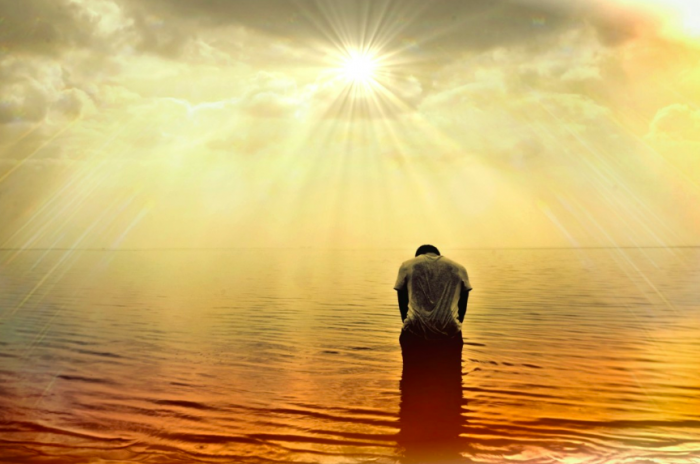Wake me up. Please stop this suffering.
Blue Mountains, Australia, 2010: I was enrolled in the most dreaded thing on my bucket list—my first vipassana.
Vipassana is a 10-day retreat in which participants take a vow of silence and are strongly encouraged to follow the program’s strict laws, which include meditating for at least 10 hours a day, abandoning all communication devices including all electronic devices, and relinquishing reading, writing, exercising, touching, or even eye contact.
Any religious practice or symbol is strictly forbidden—even yoga. Jewellery is forbidden.
Participants sit on the floor, and are expected to be especially vigilant in not moving (unless overcome by discomfort) whilst exploring the sensations in their bodies.
Hung up on every empty wall, the schedule stares you in the face—it’s more like a glare really:
4:00 a.m. Wake up gong
4:30-6:30 a.m. Meditation time
6:30-8:00 a.m. Breakfast
8:00-9:00 a.m. Mandatory meditation in the hall
9:10-11:00 a.m. Meditation
11:00-1:00 p.m. Lunch break
1:00-2:30 p.m. Meditation in the hall or room
2:30-3:30 p.m. Group meditation in the hall
3:30-5:00 p.m. Meditate in the hall or in your own room
5:00-6:00 p.m. Tea break
6:00-7:00 p.m. Group meditation in the hall
7:15-8:30 p.m. Discourses
8:30-9:00 p.m. Meditation
9:00-9:30 p.m. Question and answer session
9:30 p.m. Bedtime
What is the philosophy behind this program?
In the Buddhist tradition, vipassanā (Pāli) or vipaśyanā (Sanskrit: विपश्यन) is to see into the nature of reality or as the official vipassana website claims, it means to “see things as they really are.”
अत्तदीपा विहरथ अत्तसरणा अनञ्ञसरणा।
धम्मदीपा विहरथ धम्मसरणा अनञ्ञसरणा।।
“Make an island of yourself, make yourself your refuge; there is no other refuge. Make truth your island, make truth your refuge; there is no other refuge.” ~ Mahā-Parinibbāna Sutta, Dīgha Nikāya, 16.
In the Theravada Buddhist tradition, vipassanā refers to insight into the trinity of understanding the nature of reality in Buddha’s discourses, known as the “Three Universal Truths:”
- anicca (impermanence)
- dukkha (suffering or better translated as unsatisfying)
- anatta (no self or the realisation of agelessness or non-self)
The process of vipassana in this tradition, places the centre of awareness on bodily sensations. This consciousness of the rise and fall of the breath, and the changing nature of sensations, becomes a meditation on annica (impermanence).
This philosophy subscribes to a belief that inner harmony comes from the observation of somatic experiences, and the more one observes oneself (essentially sits with the self), the more the mind becomes still, pure, and harmonious.
And in turn, the more the mind stills—the more we become free from our suffering.
The Buddha taught śamatha (calm abiding) in tandem with vipassanā to reach paññā (wisdom). These are required for a wholesome meditation practice.
In the Pāli canon, both these mental qualities are the pathway to developing a still mind.
Śamatha is the practice of calming the mind and its “saṅkhāra” (mental defilements, agitations, or formations संस्कार). Śamatha is usually taught via single-pointed awareness or breath-mindfulness founded on śīla (morality).
In the modern vipassana teaching, the philosophical focus always returns to annica (the changing nature of phenomena) as the gateway to nirvāṇa (Pali: nibbāna)—the liberation from suffering.
What did I learn from this retreat?
How do we face our suffering and feel it without losing ourselves in drugs, alcohol, television, or mind-numbing foods?
When we look at our suffering, we must examine it closely, and allow ourselves to feel without judgement.
Suffering, like a child, will only get worse if we are unkind to it.
The mind is an illusion. It is not real. Our thoughts and feelings feel real to us, but we must be patient with our minds, and have compassion for ourselves. Compassion is the space that lets us feel—lets us cry, scream, curse—without questioning.
The mind is directly or indirectly always causing and manifesting our suffering.
Hence the importance of an inward practice where we can access, at least for a short while, beyond the mind. It is usually the reactive mind or thought response to phenomena that bring forth a type of dissonance where we are disconnected from our source.
This disconnection can bring a profound disharmony and suffering as we struggle to accept what is happening or what happened around us.
It is not what happened—it is the time lag to accept and integrate whatever the event.
Then, for many of us, it is the story that makes us suffer. If something happens, the suffering does not exists with the story associated with it.
The story is what keeps our suffering alive.
It is the “whole” of becoming human that is often neglected, where the inner meets the outer. This “whole” is in embracing all aspects of the self without running away from feeling by embracing numbness.
Would I do it again?
I’ve subsequently sat two more retreats in this tradition. I regard it as a prelude to exploring authentic Buddhism, and finding a saṅgha (community).
I feel like in many cases, because of its Draconian approach, it puts people off Buddhism for life, and often turns them off meditation too.
The focus on suffering in vipassana seems more distinct than in other Buddhist traditions, with the exception of Zen Buddhism.
I would also advocate the importance of having a writing pad or journal so you can write down your thoughts.
Whilst sensory deprivation is helpful, writing things down is essential to clear the mind—otherwise, one constantly recycles or regurgitates the same thoughts for 10 days. I also prefer having some reading matter.
I would say, with certainty, I will be sitting in more of these in the future.
~
Ready to join?
Hey, thanks so much for reading! Elephant offers 1 article every month for free.
If you want more, grab a subscription for unlimited reads for $5/year (normally, it's $108/year, and the discount ends soon).
And clearly you appreciate mindfulness with a sense of humor and integrity! Why not join the Elephant community, become an Elephriend?
Your investment will help Elephant Journal invest in our editors and writers who promote your values to create the change you want to see in your world!
Already have an account? Log in.
Ready to join?
Hey, thanks so much for reading! Elephant offers 1 article every month for free.
If you want more, grab a subscription for unlimited reads for $5/year (normally, it's $108/year, and the discount ends soon).
And clearly you appreciate mindfulness with a sense of humor and integrity! Why not join the Elephant community, become an Elephriend?
Your investment will help Elephant Journal invest in our editors and writers who promote your values to create the change you want to see in your world!
Already have an account? Log in.
 Share on bsky
Share on bsky






Read 1 comment and reply